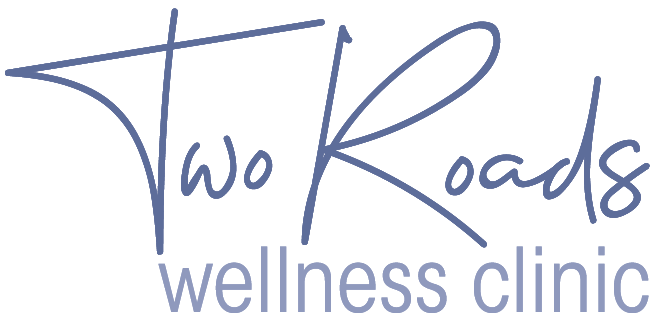Finding the Best Type of Fasting for You
Fasting has been around for about as long as humans have. In addition to involuntary fasting from temporary lack of food or widespread famines, fasting has been an important part of most world religions, including Hinduism, Buddhism, Judaism, Christianity, and Islam. From west to east, it’s what humans do and what we’ve been doing for thousands of years. It’s literally in our DNA. The following are the biggest fasting takeaways.
Fasting works for everyone, you just have to figure out which type is right for you.
Intermittent Fasting
Intermittent fasting (IMF) an excellent way to limit calories if you have a busy lifestyle and also you’re prone to overeating, and it’s way more enjoyable than counting calories. Many patients notice IMF is more effective than regular dieting. IMF is touted all over the internet as being a relatively new fasting method. This is true and false. Yes, the term intermittent fasting is new, but let’s face it, the concept has been around for thousands of years. Even today, many people already do some form of IMF without realizing it. We define IMF as eating for 4 to 10 hours, then fasting for remainder of the day/night. So, if you start consuming calories at 11am and your last meal ends at 7pm, that’s an 8 hour eating window, which means a 16-hour daily intermittent fast (24 hrs - 8 hrs = 16 hrs of fasting). IMF is a great alternative to regular fasting, and is especially good for those who are just too busy with life and longer fasts won’t work, and ones who are not really that hungry in the morning (or in the evening). How do you decide on your IMF window? Many choose 12 noon to 8pm, but it’s up to you. Just because you’re one of those people who are never hungry when they wake up, doesn’t mean you should have your eating window later in the day. Maybe if you go to bed hungry, you’d feel differently in the morning.
Juice Fasting
Juice Fasting (fruit and/or vegetable juices) involves drinking only fruit and/or vegetable juices (as well as water and unsweet teas) for one day, or up to twenty days. Juice fasting (preferably using organic juices) is an easy way to accomplish several goals. You can detoxify your body, reduce total cholesterol / LDL, reduce ingestion of grains and other lectin-containing foods, reset your digestive system and microbiome, and increase general health. It’s easier than a water fast, and it works great for almost everyone. Try some diluted fresh lemon juice. Try powdered green drinks and also, vegetable soup broths are not a bad idea if you get really hungry
Standard Fasting (Water Fasting)
For a more serious fast, try a water fast. Water fasting will provide you with the maximum fasting results. You will exhaust your liver glycogen in 1 to 2 days and go into significant ketosis. This will result in your organs being cleansed the quickest, but it’s also quite harsh. If you approach water fasting in small steps, it will probably work just fine. In my experience, extended water fasting seems better suited to lood types B and O and especially Lewis nonsecretors, as they do better with ketosis. But really anyone can do it.
How long should I fast for?
Fasting levels can range from skipping just one meal, to an entire month of fasting. While a 3-day fast is a very common, useful, and effective way to fast, there are many other lengths. The longer you plan to fast, the more planning and medical attention it will require. If this is the first time you’ve fasted, you should start out slow. Discuss with your physician and choose from one of these fasting methods:
1. Half day fast
(skip breakfast and lunch, and just have dinner (or a snack then dinner). Easy to do.
2. One day fast (36-hour fast).
This is a good duration for newbies starting out with fasting. Just about anyone can do this type of fast. Indeed, even very sick people going in for surgery are often recommended by their surgeon to fast before surgery. You can decide to fast anytime you want.
3. Two or three-day fast.
This fast is often done once a month by many. It does enough of a job to remove toxins. Besides, three-day fasts dovetail with a work schedule. If you have a half-day at work Friday, you can actually start Thursday night and go back to work Monday.
4. One week fasts (or longer).
This longer fast can be done 2 or 3 times a year. Now we are getting into serious fasting lengths, and you need to be much more serious than with the 1 to 3 day fasts. Unless you’re a young and healthy adult with a BMI over 24 (males) or over 27 (females), you’ll need to check in with your physician beforehand. If you live in a warm climate, start it a day or two after Christmas, or early January. If you live in a cold climate you might want to wait until spring (fasting raises cortisol).
About Two Roads Wellness Clinic
At Two Roads Wellness Clinic, we want to help you find the path that makes a difference in your life. We’re an integrative health clinic offering a vast array of services including, mental health treatments such as EMDR (eye movement desensitization and reprocessing), expressive arts therapy, family therapy, medication management, primary care, integrative nutritional support including genetic nutritional counseling, life coaching, physical therapy, infrared sauna services, community education and outreach, and more.
The Two Roads Wellness Clinic team of therapists, medical and nutrition staff, life coaches, physical therapists, and emotional support animals are ready to help you find an integrated approach to your wellness. To schedule an appointment, visit our contact page, to get started at one of our convenient locations in Champaign, Danville, or Mahomet.

